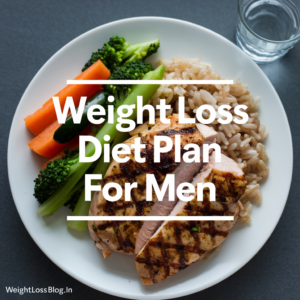Do’s and Don’ts of the Anti-Inflammatory Diet for Effective Weight Loss
Introduction
The Anti-Inflammatory Diet is an eating plan designed to reduce chronic inflammation in the body by focusing on whole, nutrient-dense foods and avoiding processed, inflammatory foods. Following the right guidelines can help you achieve successful weight loss while promoting better health. Here’s a list of essential do’s and don’ts to help you get the  most out of the Anti-Inflammatory Diet.
most out of the Anti-Inflammatory Diet.
Do’s of the Anti-Inflammatory Diet
1. Do Focus on Fruits and Vegetables
Fruits and vegetables are packed with antioxidants, vitamins, and fiber, all of which help fight inflammation and promote weight loss. Leafy greens, berries, tomatoes, and citrus fruits are particularly effective at reducing inflammation. Aim to fill half of your plate with colorful fruits and vegetables at every meal to maximize their anti-inflammatory benefits.
2. Do Include Omega-3-Rich Foods
Omega-3 fatty acids, found in fatty fish like salmon, sardines, and mackerel, are essential for reducing inflammation. Plant-based sources like flaxseeds, chia seeds, and walnuts are also great options. Make sure to include omega-3-rich foods in your diet at least twice a week to support weight loss and improve metabolic health.
3. Do Eat Whole Grains
Whole grains like quinoa, brown rice, oats, and barley are excellent sources of fiber and have a low glycemic index, which helps stabilize blood sugar levels and reduce inflammation. Replace refined grains with whole grains to support healthy digestion and weight loss.
4. Do Use Anti-Inflammatory Spices
Spices like turmeric, ginger, cinnamon, and garlic are powerful anti-inflammatory agents that can enhance the flavor of your meals while providing health benefits. Add these spices to your dishes regularly to boost the anti-inflammatory properties of your diet.
5. Do Stay Hydrated
Staying hydrated is essential for overall health and weight loss. Drinking plenty of water helps flush out toxins, supports digestion, and keeps inflammation in check. Aim for at least 8 glasses of water a day, and consider adding herbal teas like green tea or ginger tea, which have additional anti-inflammatory benefits.
Don’ts of the Anti-Inflammatory Diet
1. Don’t Rely on Processed Foods
Processed foods, such as chips, sugary snacks, and refined grains, are highly inflammatory and can contribute to weight gain, insulin resistance, and other metabolic issues. Avoid processed foods as much as possible and focus on whole, natural foods that nourish your body and reduce inflammation.
2. Don’t Overdo Refined Sugars
Refined sugars, found in sweets, baked goods, and sugary drinks, are a major contributor to inflammation in the body. Excess sugar intake can lead to insulin resistance, weight gain, and increased inflammation. Limit your consumption of added sugars and opt for natural sweeteners like honey or fruit if needed.
3. Don’t Ignore Your Protein Intake
Protein is important for maintaining muscle mass and supporting  metabolism, especially when trying to lose weight. Make sure to include adequate protein from anti-inflammatory sources like fatty fish, legumes, nuts, and seeds. Avoid processed meats, which are pro-inflammatory and can hinder your progress.
metabolism, especially when trying to lose weight. Make sure to include adequate protein from anti-inflammatory sources like fatty fish, legumes, nuts, and seeds. Avoid processed meats, which are pro-inflammatory and can hinder your progress.
4. Don’t Skip Healthy Fats
Healthy fats, such as those found in olive oil, avocados, nuts, and seeds, are important for reducing inflammation and supporting overall health. Don’t avoid fats entirely—just focus on incorporating healthy fats into your meals to balance your macronutrient intake and promote satiety.
5. Don’t Forget to Plan Your Meals
Meal planning is essential for success on the Anti-Inflammatory Diet. Without proper planning, you may be tempted to reach for processed, inflammatory foods. Take time each week to plan out your meals and snacks, focusing on whole, anti-inflammatory foods to keep you on track with your weight loss goals.
Conclusion
The Anti-Inflammatory Diet offers a powerful approach to weight loss by reducing chronic inflammation through whole, nutrient-dense foods. By following these essential do’s and don’ts, you can optimize your food choices, reduce inflammation, and achieve lasting weight loss. Focus on colorful fruits and vegetables, omega-3-rich foods, and whole grains, and avoid processed, inflammatory foods to ensure success on your weight loss journey.